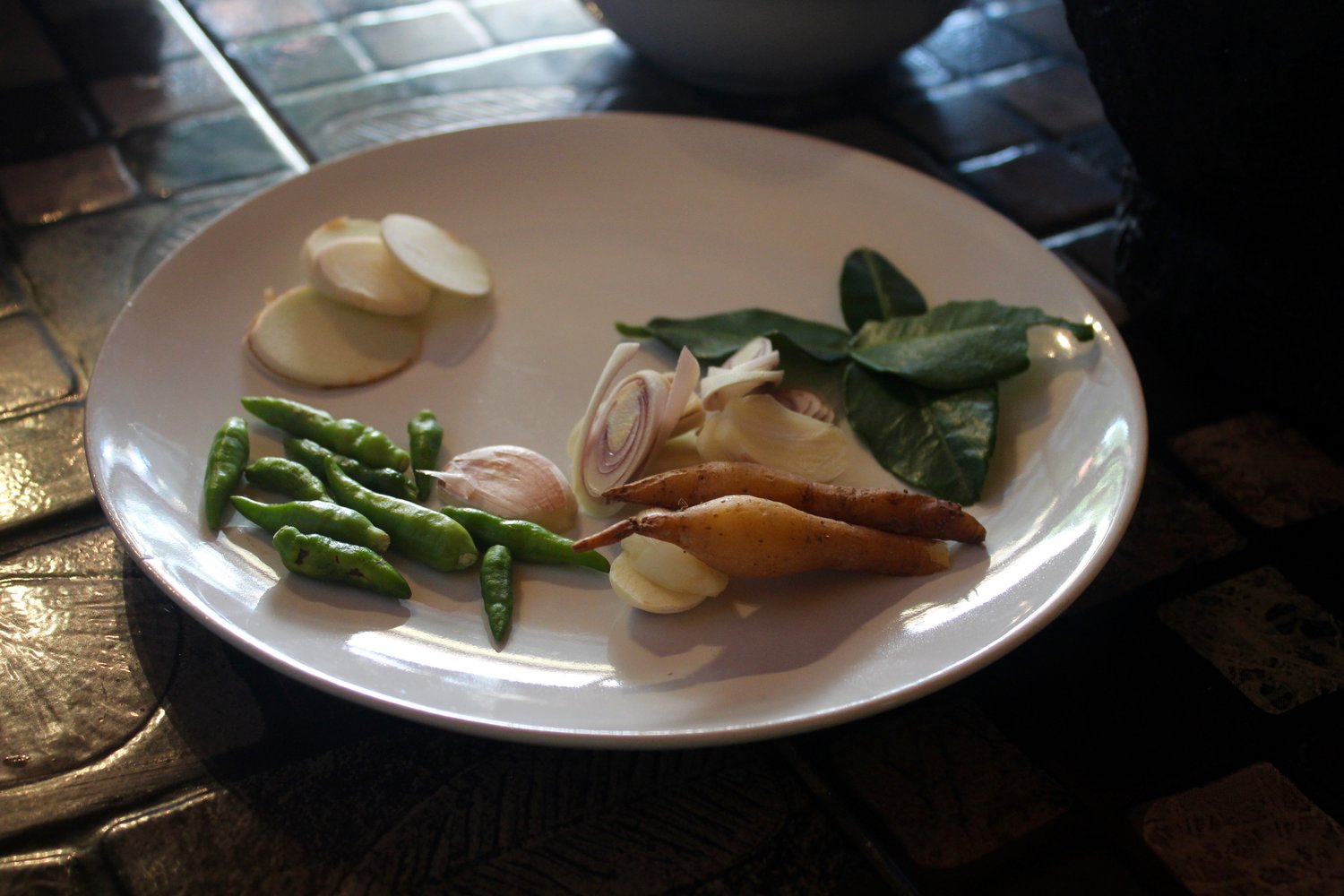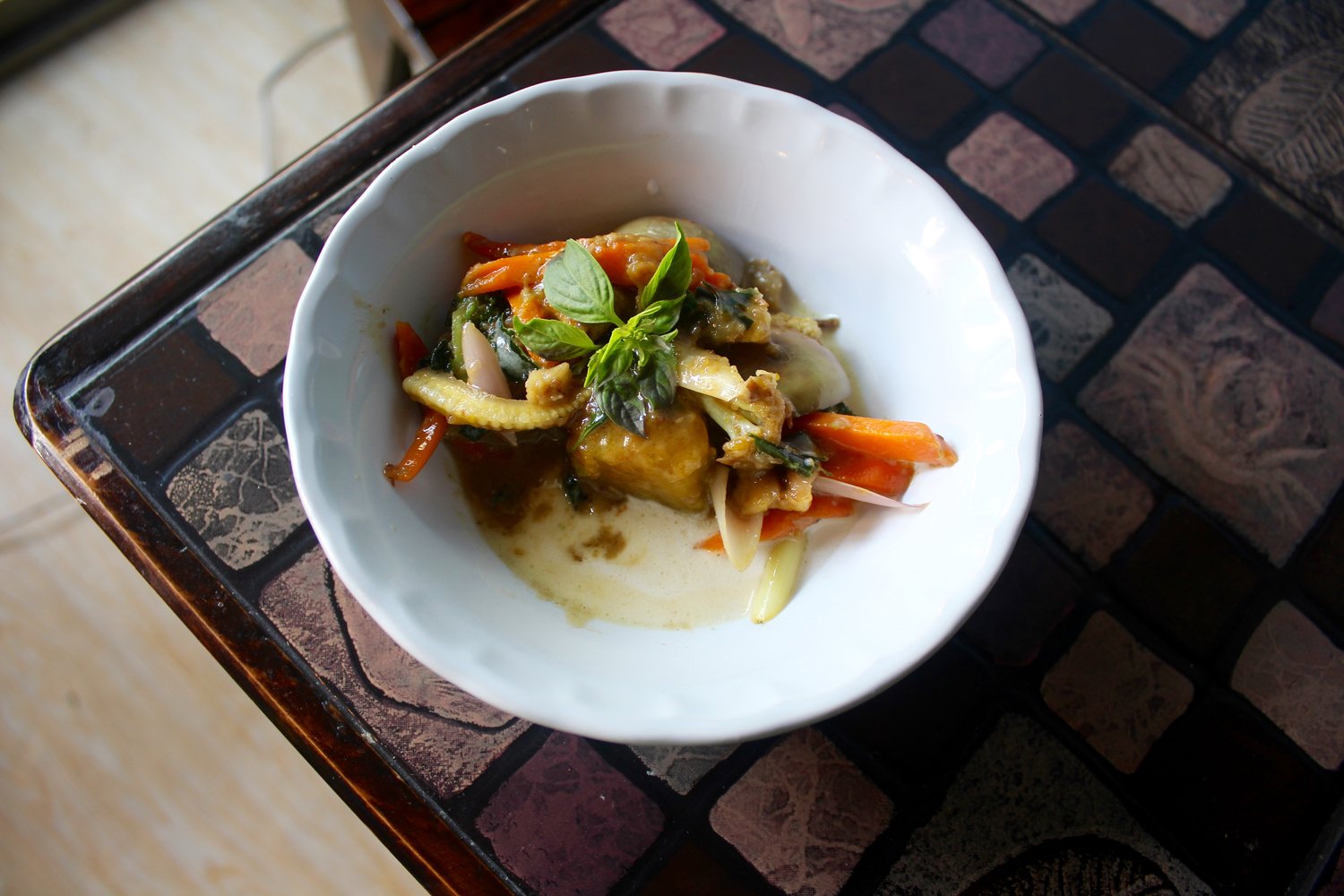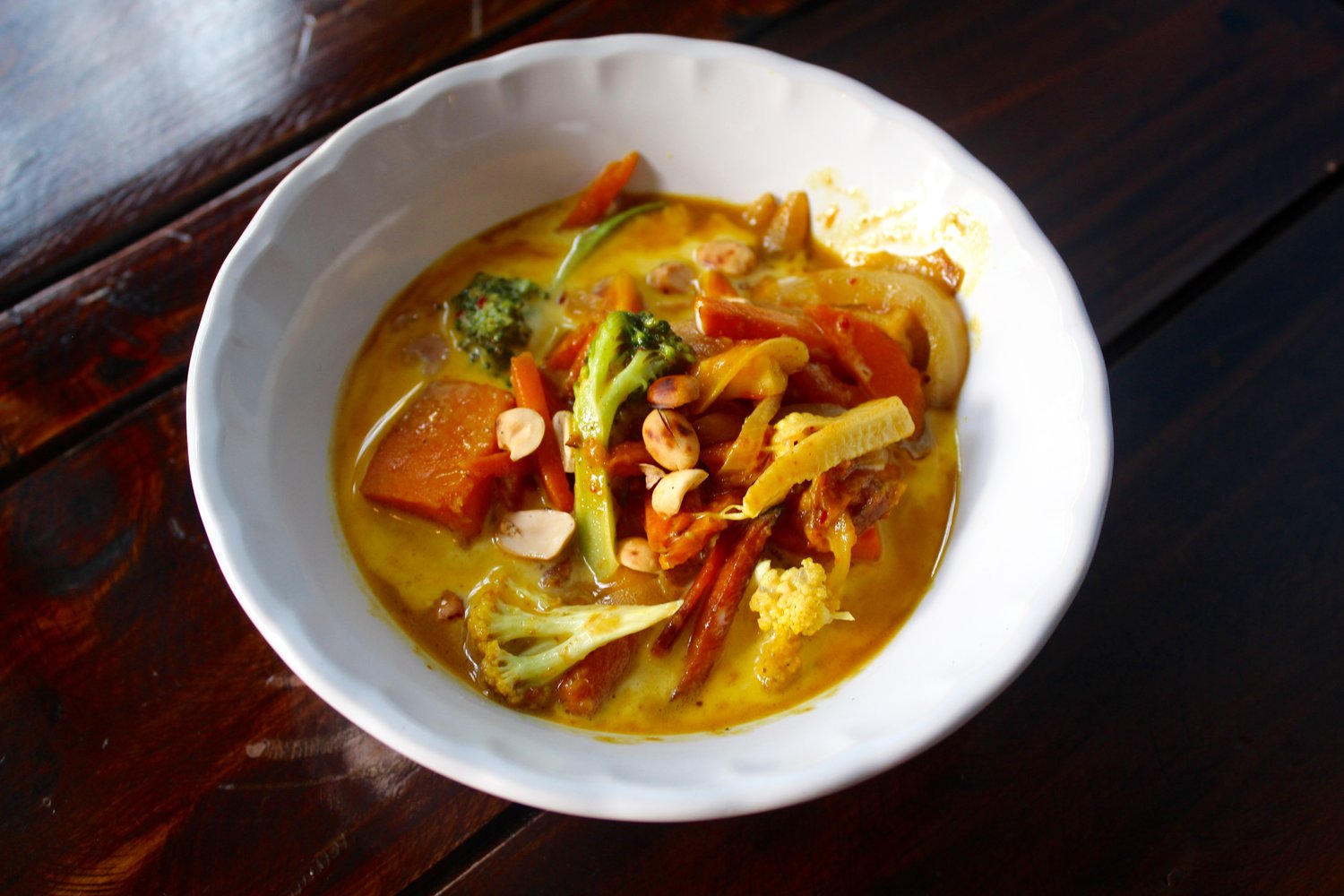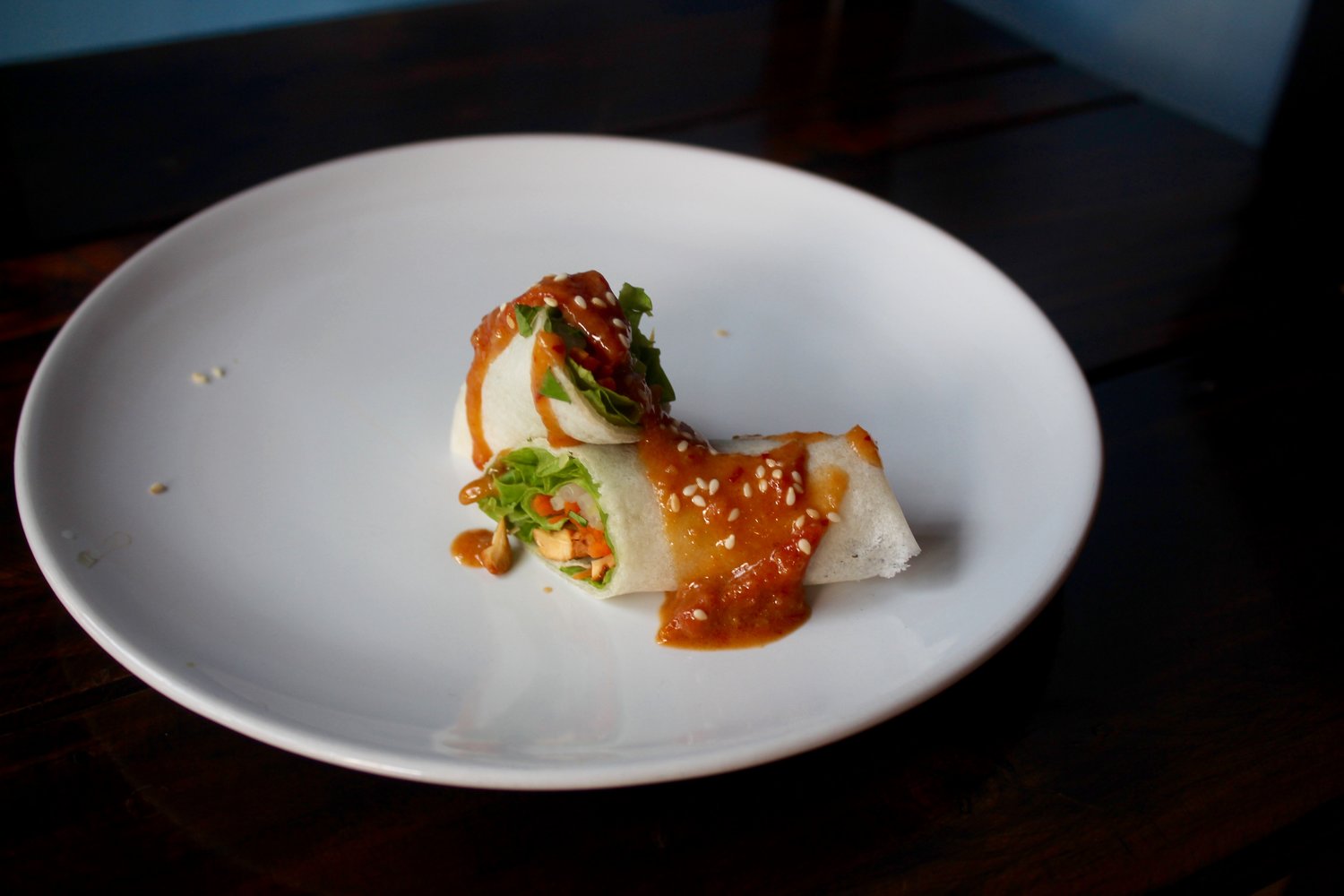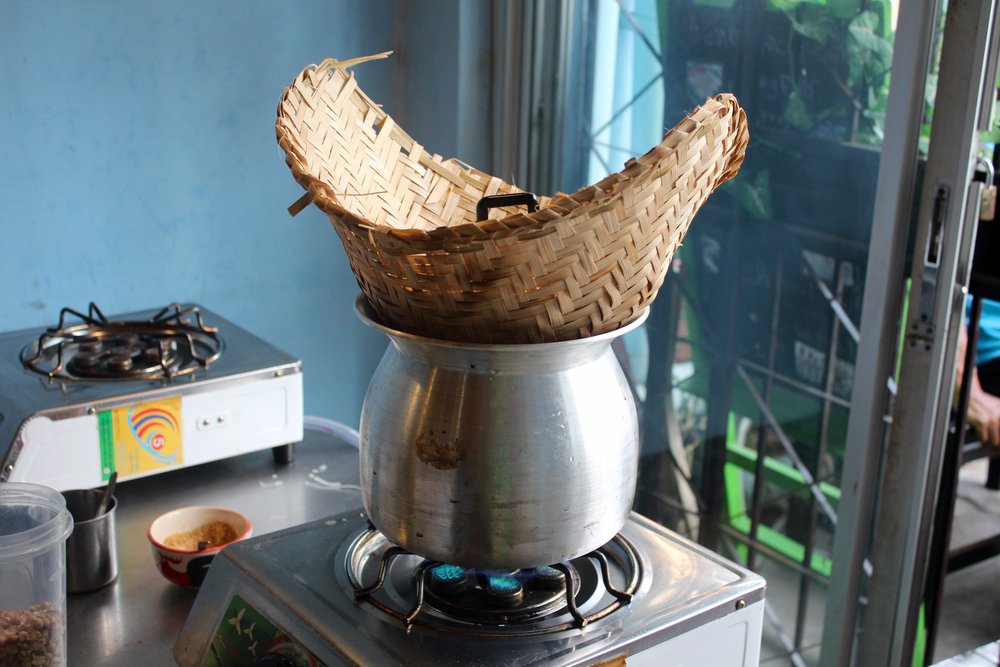Thai Cooking Class And A Note On Vegetable Oils
Every time after visiting Thailand we bring a bunch of herbs, spices and the good intention of finally starting to cook Thai, back home. Once unpacked and settled back in, all things get shoved into the far end of top cupboard and eventually get forgotten about. Including those good intentions. We have vowed to change this and to finally (4th time is a charm, right?) attend a Thai cooking class in the hope that this will inspire us to actually recreate our favourite Thai dishes at home.
After doing some research, we decided on May Kaidee, a vegetarian/vegan cooking school with centers in Bangkok and Chiang Mai. They offer a variety of cooking classes ranging from a standard Thai cooking class to raw food, fruit carving and tofu making classes. They even have an advanced chili paste course. We opted for the standard 4-hour course at a price of 1500 baht (around 38 Euro), where we got to learn a total of seven dishes: red and green chili paste, Pad Thai, green curry, massaman curry, fresh spring rolls, som tam, pumpkin hummus and mango with sticky rice.
Classes are held over half a day either in the morning or afternoon. From what our instructor, Nim, told us, afternoon classes are usually less busy. Indeed, by boyfriend and me got a private cooking class which really allowed us to receive one-on-one attention as well as being able to control the pace of the class and ask tons of questions. We even had a little battle going on about who would be the better chef and compared each meal we made, with Nim having the finally say. After each dish, we sat down to taste the food and have a little break before the next recipe. We only had a small taste of everything and took the rest home, which made for a good dinner that night and lunch the next day. We had a relatively big lunch before coming to May Kaidee, but you might want to only have a slight snack so that you can really indulge in your own creations.
A photo posted by steffejung (@steffejung) on Aug 14, 2015 at 7:38pm PDT
All in all, we had a blast and can recommend May Kaidee to anyone looking to learn about Thai cooking! We were so enthusiastic after our class, that we decided to cook for my boyfriend's family already two days later (good start those good intentions). We went to the local market to buy all the ingredients for the Massaman curry and actually managed to replicate the dish with no difficulty. The only alteration we made was to use coconut oil instead of vegetable oil. As coconut oil is a bit sweater, we balanced the dish by using less sugar and a tiny bit more soy sauce. Scroll through the pictures and keep reading if you want to know why swapping vegetable oil for a healthier alternative is a #wholesome idea.
The Thai cuisine uses a lot of vegetable oil. A LOT. Many people misguidedly perceive vegetable oil as healthy. Maybe it's because it has the word vegetable in it. "Veggies are good for you, right? So vegetable oil must be too...". Unfortunately this isn't the case.
Why vegetable oil is bad for you
Vegetable oils as we know them didn't exist until the early 1900's. That is because they require a complicated chemical process that human mankind didn't know back then in order to extract the oil from the seeds, like rapeseed (canola oil), soybean (soybean oil), corn, sunflower, etc. Unlike olive oil and other healthy oils, these vegetable oils cannot be extracted simply by pressing or natural separation. Instead, they must be chemically removed, making vegetable oils some of the most chemically altered foods in our food supply system. And yet most people still believe them to be healthy...
Vegetable oil comes in many different forms and names, so here is a short list of the things you should stay clear of
Anything labeled as vegetable oil
Canola Oil
Corn Oil
Soybean Oil
Peanut Oil
Sunflower Oil
Safflower Oil
Cottonseed Oil
Grapeseed Oil
Margarine
The problem is not only cooking with these oils, but eating food that contains these oils. Nowadays, vegetable oil can practically be found in all processed foods ranging from salad dressings to crackers and chips. It is already a good first step to stop using the oils in your own kitchen, but I would encourage you to also always check the labels of the processed foods you are buying (if you haven't already ditched processed food all together, that is).
Let's take a closer look at why the are so bad
Vegetable oils are polyunsaturated fats that are highly unstable and oxidise easily during the cooking process or when exposed to light. Oxidised fats are known to cause inflammation in the body as well as mutation in cells which can eventually lead to skin cancer and other types of cancer.
They contain a high concentration of Omega-6 fatty acids. The body needs a 1:1 balance of Omega-3 and Omega-6 fats, but when consuming vegetable oils this balance is hard to keep.
Imbalances of these fats can cause food allergies and troubles with the immune systems.
As mentioned in point 1, vegetable oil can cause cell mutation. This is why vegetable oil can affect the reproductive system and the developing bodies of unborn babies and children.
This is only a snippet of the possible bad effects of vegetable oil. If you are still not convinced and shocked in disbelief, head to WellnessMama's post about vegetable oils which will definitely give you the last kick you need to spring clean your kitchen cupboards.


